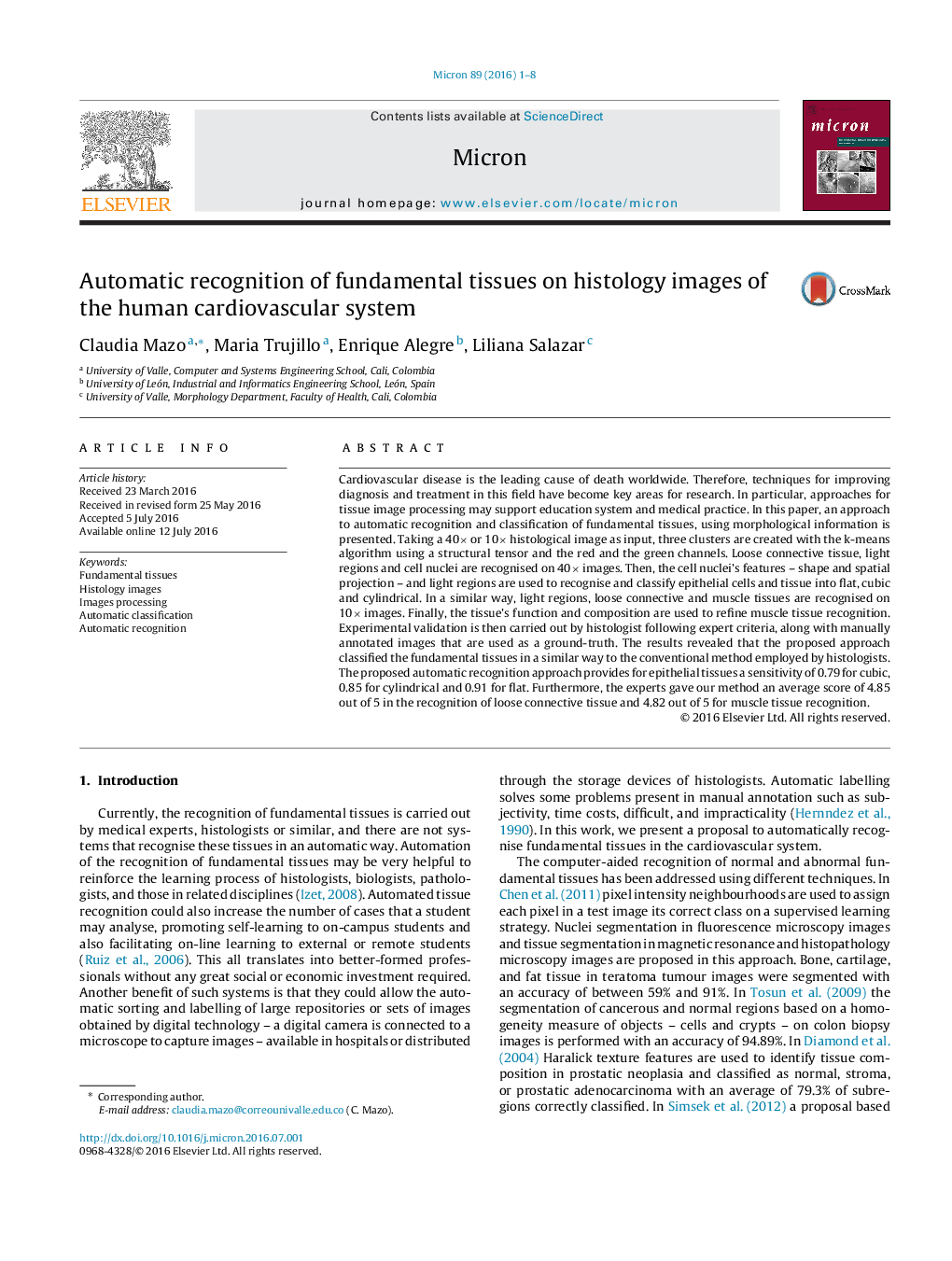| Article ID | Journal | Published Year | Pages | File Type |
|---|---|---|---|---|
| 1588665 | Micron | 2016 | 8 Pages |
Abstract
Cardiovascular disease is the leading cause of death worldwide. Therefore, techniques for improving diagnosis and treatment in this field have become key areas for research. In particular, approaches for tissue image processing may support education system and medical practice. In this paper, an approach to automatic recognition and classification of fundamental tissues, using morphological information is presented. Taking a 40Ã or 10Ã histological image as input, three clusters are created with the k-means algorithm using a structural tensor and the red and the green channels. Loose connective tissue, light regions and cell nuclei are recognised on 40Ã images. Then, the cell nuclei's features - shape and spatial projection - and light regions are used to recognise and classify epithelial cells and tissue into flat, cubic and cylindrical. In a similar way, light regions, loose connective and muscle tissues are recognised on 10Ã images. Finally, the tissue's function and composition are used to refine muscle tissue recognition. Experimental validation is then carried out by histologist following expert criteria, along with manually annotated images that are used as a ground-truth. The results revealed that the proposed approach classified the fundamental tissues in a similar way to the conventional method employed by histologists. The proposed automatic recognition approach provides for epithelial tissues a sensitivity of 0.79 for cubic, 0.85 for cylindrical and 0.91 for flat. Furthermore, the experts gave our method an average score of 4.85 out of 5 in the recognition of loose connective tissue and 4.82 out of 5 for muscle tissue recognition.
Related Topics
Physical Sciences and Engineering
Materials Science
Materials Science (General)
Authors
Claudia Mazo, Maria Trujillo, Enrique Alegre, Liliana Salazar,
